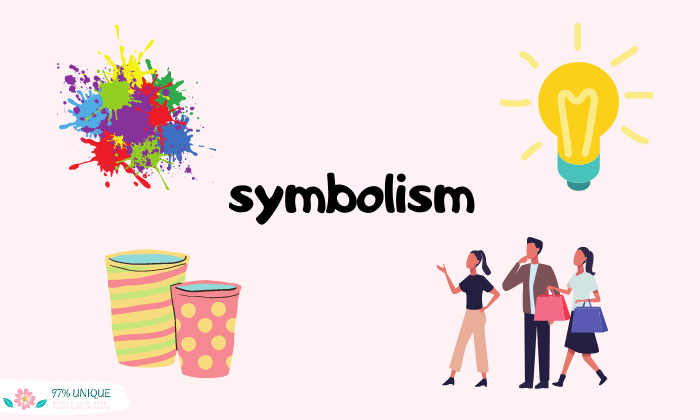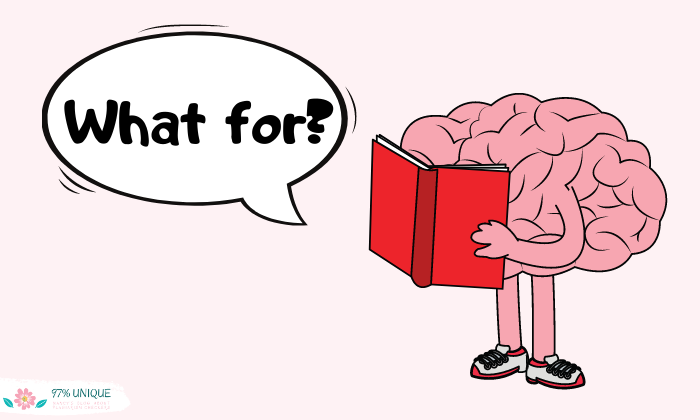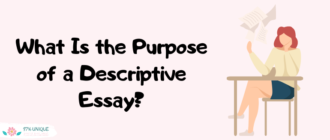
As a middle school English teacher I’ve spent countless hours reading novels, short stories, poetry, and beyond with my students. We read for content, we read for meaning, we read for literary devices, we read for themes, we read for countless reasons.
With each new work of literature we read, we try to extract the story’s lesson, its central message, its theme.
If you’ve found yourself in the same position my students often find themselves, grappling to understand an abstract idea like symbolism, you’ve come to the right place. If you read on, you will be able to understand the following principles of writing a symbolism essay:
- Defining symbolism.
- The different types of symbolism.
- The function of symbolism in literature.
- Components of a symbolism essay.
How to Write a Symbolism Essay: Defining, Identifying, and Analyzing Symbols
One of the many ways we arrive at a work’s meaning is through an analysis of the literary devices employed by writers. When we get to our study of symbolism, students like you have no trouble understanding the overarching idea of symbolism. However, independently identifying and analyzing symbolism in a passage can be mind-boggling.
One of the easiest and most relatable examples I use to teach symbolism is the American flag. Concretely, it’s a rectangular piece of fabric with red and white stripes and white stars upon a navy blue background.

Symbolically, however, the flag means so much more. It represents our freedom, patriotism, the thirteen original colonies, the 50 states, liberty, justice, our independence from Great Britain, and so much more.
Easy peasy, right? You get it just like my students get it! But when they have to apply the idea of identifying symbolism in literature, they’re totally lost.
In trying to help my students recognize symbolism I’ve visited countless forums, blogs, university websites, and beyond to try to strategize ways to make the concept clearer. What it comes down to is, as with any other assignment, you have to be willing to do the work to conceptualize symbolism.
To be good a analyst of symbols, you need to truly understand what a symbol is. So let’s start in the same place I start with my own students: defining symbolism. After that, I’ll tell you how to write a symbolism essay.
Symbolism Defined
In short, symbolism is the literary device that refers to the use of words, colors, objects, people, locales, or ideas that represent an idea beyond itself.

If you’ve ever read F. Scott Fitzgerald’s “The Great Gatsby,” try to recall how frequently he references the color green. Green is widely accepted as symbolic of greed and money. In the novel, green represents the protagonist’s belief that he has to earn and maintain great wealth to win the heart of the object of his affection.
Symbolism calls on readers to make the connection between recurring objects, colors, words, etc., and their intended meaning. Ask yourself, is green just a descriptive word that modifies a noun? Or is there more to it than that? If, as a reader, you can attach greater significance to that recurring element, you’ve likely just identified symbolism.
In this helpful video, an Oregon State University professor discusses ways to recognize symbolism in literature.
He provides some really great examples to further aid students like you in identifying recurring objects that are likely symbolic.
3 Types of Symbolism in Literature
Although how we define symbolism has not fluctuated over time, the types of symbolism writers use, have. With that being said, the three most commonly used types of symbolism are as follows:
1. Religious Symbolism
Probably the most widely recognized type of symbolism, religious symbolism refers to objects or ideas that have sacred, spiritual, or holy significance. For instance, in Christianity, the Crucifix is literally the wooden cross upon which Jesus Christ lost his life, but spiritually it represents God’s sacrifice for the salvation of humanity.
In Buddhism, a Lotus on its surface is a beautiful flower, while symbolically the stages of the flower’s budding represent Buddha’s awakening and a Buddhist’s spiritual growth.

Religious symbols have been used by writers throughout the ages to allude to the conflicts, settings, etc. that characters endure in the plot of a story.
For example, in William Golding’s “The Lord of the Flies,” the story’s setting, a utopian island with temptation at every turn, religiously symbolizes the Garden of Eden. Much like the boys on the island who are unable to regulate their desires without social order, the Garden of Eden is absent of authority which leads its occupants to their own devices.
2. Romantic Symbolism
Romantic symbolism refers to those objects correlated to expressions of love. Love has been a topic for many novels and poems. Romantic symbols are those objects, words, colors, etc. that so emblematically express and signify love.

In Shakespeare’s “Sonnet 130” for instance, the speaker compares his mistress’s cheeks to the color of a rose and her scent to the fragrance of a rose. Red roses are commonly accepted as a symbol of love; through the speaker’s comparison of his mistress to the rose, the reader understands, that although it’s not implicitly stated, the rose represents his love for her. Ergo, romantic symbolism.
3. Emotional Symbolism
Good writers use figurative language to hint at the emotions and feelings characters experience rather than coming right out and saying it. Doing so is what makes literature engaging and entertaining.

Emotional symbols represent particular sentiments. Like when someone raises a clenched fist it represents political solidarity as in the Black Lives Matter Movement. The fist is just a fist, but depending on the circumstances in which it’s raised, it may carry this much deeper meaning.
The Effect of Symbolism in Literature
Rarely are fictitious stories written purely for the reader’s enjoyment. Like your literature teachers have likely told you, good fiction writers teach a lesson or moral or recreate some significant conflict from which you, the reader, are called upon to recognize the importance.
By including literary devices like symbolism, writers create layers of meaning beyond the prosaic. Symbols demonstrate and reveal themes, lessons, morals, and significance better than just outright saying them.

For example, when you read the Modoc Indian origin story, “When Grizzlies Walked Upright,” you’re meant to learn the importance of obeying your parents. You glean a deeper meaning from the symbolism in the story than if the writer were to just say, “It’s important to obey your parents.”
Components of a Symbolism Essay and What You Should Include There
So, what’s a symbolism essay anyway? How to write a symbolism essay? One of the best ways to help you grapple with the concept of symbolism is by analyzing it in the context of the texts you read.
The fact is, symbolism has been a well-loved literary device by authors since cave paintings and hieroglyphics. The more comfortable you become with recognizing symbolism, the better you’ll understand the text and the better readers you’ll become.

The body of a symbolism essay essentially identifies and analyzes particular symbols as presented in a text. When identifying the symbol(s) you should explain the author’s purpose in using them.
As the essayist, you must ask yourself why the writer thought it was important to utilize particular symbols, what he/she hopes to convey or reveal, and what you, the reader, were meant to extract from the given symbol(s)?
It’s similar to when a writer chooses to include curse words in his/her composition. What’s the purpose? What does the particular curse word add to the meaning of the text? Would the passage have the same effect without the curse word?
Just as you may wonder about the author’s choice to include curse words, which I dive into here, his/her purpose in selecting particular symbols to further engage you is significant.

Analyzing symbolism is a process. The first step in that process is identifying a symbol in the literature.
After you’ve read a passage, think about whether an overarching subject stuck out to you. If so, is it repeated? Could it contain a deeper meaning?
If there’s an object that stands out to you, consider whether the object has other accepted meanings. If not, could you attach a logical and reasonable meaning to the object? If so, you’ve successfully identified symbolism in the text.
In this awesome overview on symbolism, Shaelin of “Shaelin Writes” discusses how you can arrive at the symbolic meaning of significant and recurring objects, colors, words, etc.
Next, it’s important to consider the effect or function of the symbol? What is the writer trying to convey? What is the writer hoping to show you instead of outright telling you?
“Word Ink” bloggers Gannon Daniels and Vanessa Ziff Lasdon, sum up the purpose of symbolism so eloquently when they assert, “In the best literature, symbols are unexpected and unique to the character, yet utterly logical and precisely chosen by the writer to evoke multiple layers of meaning.”
Finally, marry your analysis in a well-organized paragraph where you identify the symbol in a topic sentence, explain the meaning of the symbol, and provide textual evidence of how the symbol is used in the context of the passage; make these explanations in the sentences that follow the topic sentence. Round out your paragraph with a concluding sentence that links back to the topic sentence of the same paragraph.

In some writing mediums, you may consider alternate approaches. Like when you write a narrative literature review, as I discuss here, there are a variety of formats to choose from. However, the five-paragraph structure is most suitable for a symbolism essay.
The five-paragraph essay format is generally a good way to format a symbolism essay. Introduce the text and your subject in the first paragraph, identify and analyze a different way the symbol presents itself in each body paragraph, and conclude by connecting your analyses.
Useful Resources
- Color meanings – the power and symbolism of colors
- Animal symbolism: animals and their meanings
- Examples of symbolism in literature
- Meanings of various religious symbols
Conclusion
Finally, in literature symbolism is a literary device, or figurative language, that calls upon the reader to extract deeper meaning from objects, concepts, words, etc.
In literature, writers use symbols to show readers something instead of outright telling them.
A symbolism essay helps readers to identify and analyze symbols for their intended meaning and function. As well as the useful resources provided herein on how to write a symbolism essay, this article provides additional support in choosing the best plagiarism checker for teachers.





